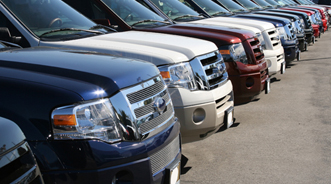Edmunds.com Sales Forecast Gives Mixed Message

By subscribing, you agree to receive communications from Auto Remarketing and our partners in accordance with our Privacy Policy. We may share your information with select partners and sponsors who may contact you about their products and services. You may unsubscribe at any time.
SANTA MONICA, Calif. –
The Edmunds.com forecast for September new-vehicle sales left it trending in mixed directions compared to the previous month and the same time last year.
Site analysts expect this month’s new-vehicle sales, including fleet, to total approximately 936,900 units. That amount would represent a 27.9-percent increase from September 2009, but a 5.5-percent decrease from August of this year.
Dealing strictly with retail sales, Edmunds.com is predicting that September total to be approximately 757,000 units, down from approximately 817,000 last month.
As a result, the site believes September’s Seasonally Adjusted Annualized Rate could be 11.47 million, up slightly from 11.44 million last month.
Analysts also interjected SAAR for retail sales should remain constant from last month at about 9.4 million.
As one of the main triggers of sales, Edmunds.com calculated the average automaker incentive in the U.S. is estimated to be $2,595 per vehicle sold this month. That average is down $106, or 3.9 percent, from last month. It’s also $151, or 5.5 percent lower than September 2009.
Subscribe to Auto Remarketing to stay informed and stay ahead.
By subscribing, you agree to receive communications from Auto Remarketing and our partners in accordance with our Privacy Policy. We may share your information with select partners and sponsors who may contact you about their products and services. You may unsubscribe at any time.
Site analysts anticipate relatively stable vehicle prices in the next 30 days. They figure approximately 47 percent of new models are expected to be discounted slightly in the coming weeks, while about 42 percent should maintain their current prices.
“Despite some noteworthy new-car introductions, auto sales are stagnant right now,” asserted Edmunds.com senior analyst Jessica Caldwell.
“Automakers seem to have accepted the current sales rate; most seem reluctant to invigorate the market through traditional incentives programs or unload significant levels of inventory as fleet sales,” Caldwell continued.
Edmunds.com senior analyst Michelle Krebs brought up another element about making year-over-year comparisons regarding the September sales forecast.
“A comparison to last year is not meaningful because the market was distorted due to last summer’s Cash for Clunkers program,” Krebs reiterated.
In looking at the overall sales picture, Edmunds.com predicted the combined monthly U.S. market share for Chrysler, Ford and General Motors would come in at 44.8 percent in September. That mark is the same as the year-ago, and up from the August share that came in at 44.5 percent.
| Manufacturer | Units Sold | Compared to September 2009 | Compared to August 2010 |
| Chrysler | 94,200 | Up 52.3 percent | Down 4.8 percent |
| Ford | 153,300 | Up 37.9 percent | Down 2.6 percent |
| GM | 171,900 | Up 10.7 percent | Down 7.1 percent |
| Honda | 104,900 | Up 37.1 percent | Down 3.5 percent |
| Nissan | 69,600 | Up 44.4 percent | Down 9.5 percent |
| Toyota | 142,700 | Up 13.4 percent | Down 3.8 percent |
| Manufacturer | September 2010 | September 2009 | August 2010 |
| Chrysler | 10.1 percent | 8.4 percent | 10.0 percent |
| Ford | 16.4 percent | 15.2 percent | 15.9 percent |
| GM | 18.3 percent | 21.2 percent | 18.7 percent |
| Honda | 11.2 percent | 10.4 percent | 11.0 percent |
| Nissan | 7.4 percent | 6.6 percent | 7.8 percent |
| Toyota | 15.2 percent | 17.2 percent | 15.0 percent |
Consumers Are Considering Economy Models
In other news from Edmunds.com, officials found 16.4 percent of shoppers using their site now are considering compact and subcompact vehicles. That’s up from 15 percent three years ago.
So which specific vehicles are the 15 million monthly site visitors pondering? Edmunds.com rattled off several, including the Chevrolet Cruze, Volt and Spark, Fiat 500, Ford Fiesta and Focus, Honda Civic, Hyundai Elantra, Mazda2, Nissan Leaf and Scion tC.
The site contends the last time economy units made a huge difference to the industry was during the 1970s. That’s when analysts say the United States’ gas crisis gave an opening to newcomer automakers from Japan.
However, they also contend the market share of compact vehicles has hovered around 20 percent for most of the past 20 years despite green trends, fluctuating gas prices and other apparent motivations to downsize.
Meanwhile, Edmunds.com insisted advances in engine technology have allowed automakers to meet the Environmental Protection Agency’s longstanding fuel-efficiency requirements (27.5 mpg for cars), while producing ever larger, more powerful models.
“Since 1990, the average car has gained 999 pounds, 14.2 inches and 118 horsepower,” noted Edmunds.com analyst Ivan Drury.
“To put that last data point into perspective, in 1990 only 30.5 percent of new cars had less than 118 horsepower total,” Drury added.
Now that each automaker is expected to achieve Corporate Average Fuel Economy (CAFE) of 35.5 miles per gallon by 2016 — or pay huge fines for missing the target — Edmunds.com believes the small, fuel-efficient vehicle are far more significant to an OEM’s bottom line.
“At the very least, these companies must recoup their sizable investments in this crop of new compact cars” Edmunds.com senior analyst Karl Brauer declared.
“Longer term, they’ll need to sell enough of them to help achieve those rising CAFE numbers,” Brauer added.


